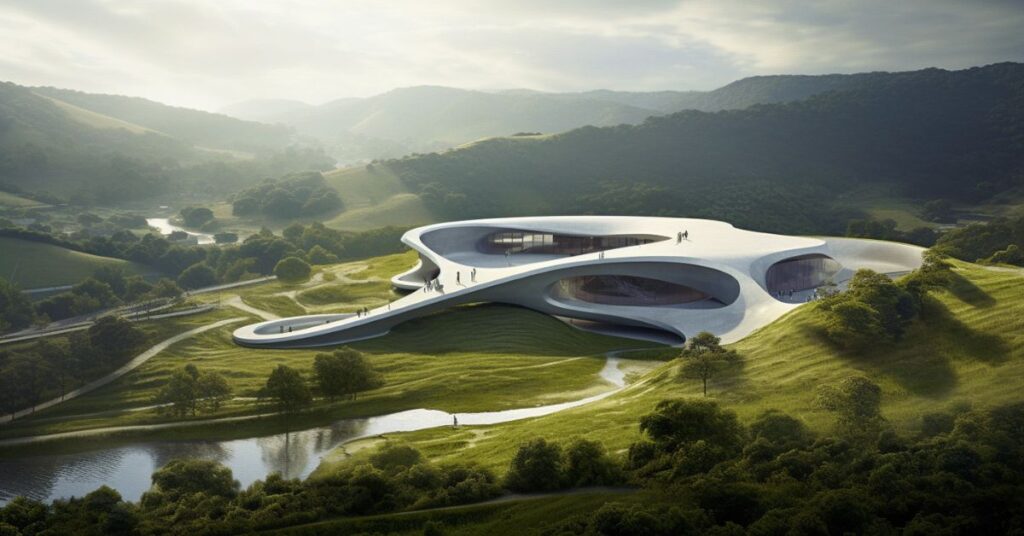In 2025, the fusion of Artificial Intelligence (AI) and architecture is no longer an emerging concept — it's a transformative force reshaping the industry. Architects are increasingly turning to algorithms, machine learning, and data-driven design to enhance creativity, reduce waste, and respond to complex spatial challenges. Welcome to the age of Designing with Algorithms, where architects collaborate with intelligent machines to create smarter, sustainable, and more responsive spaces. know about how AI & Architecture works : What Does “Designing with Algorithms” Mean? At its core, designing with algorithms refers to using AI-powered systems to generate, test, and optimize architectural forms. These algorithms can analyze vast datasets — such as environmental data, user behavior, and urban trends — and apply them to the design process. In practice, this means: What is Algorithmic Design in Architecture? Algorithmic design refers to the use of computational processes and logic-based algorithms to generate architectural forms and systems. These are not just digital drawings—they’re dynamic models that respond to real-time inputs like sunlight, airflow, user movement, or material behavior. This design method allows architects to: In 2025, tools like Grasshopper, Revit AI plug-ins, and Midjourney-based visual generation are standard parts of the design toolkit. Why AI in Architecture Matters in 2025 AI is no longer experimental in architecture—it is essential. Here's why: 1. Rapid Urbanization Requires Smart Planning Urban populations are expanding, especially in regions like Asia and Africa. AI allows planners to simulate how buildings or cities will perform in different climate and density scenarios, …
AI & Architecture: Designing with Algorithms

In 2025, the fusion of Artificial Intelligence (AI) and architecture is no longer an emerging concept — it’s a transformative force reshaping the industry. Architects are increasingly turning to algorithms, machine learning, and data-driven design to enhance creativity, reduce waste, and respond to complex spatial challenges.
Welcome to the age of Designing with Algorithms, where architects collaborate with intelligent machines to create smarter, sustainable, and more responsive spaces.
know about how AI & Architecture works :
What Does “Designing with Algorithms” Mean?
At its core, designing with algorithms refers to using AI-powered systems to generate, test, and optimize architectural forms. These algorithms can analyze vast datasets — such as environmental data, user behavior, and urban trends — and apply them to the design process.
In practice, this means:
- Generating hundreds of layout options in minutes
- Analyzing energy efficiency before a structure is even built
- Using predictive modeling to plan city infrastructure
What is Algorithmic Design in Architecture?
Algorithmic design refers to the use of computational processes and logic-based algorithms to generate architectural forms and systems. These are not just digital drawings—they’re dynamic models that respond to real-time inputs like sunlight, airflow, user movement, or material behavior.
This design method allows architects to:
- Explore multiple iterations in seconds.
- Solve complex spatial problems.
- Create form-finding systems using data.
In 2025, tools like Grasshopper, Revit AI plug-ins, and Midjourney-based visual generation are standard parts of the design toolkit.
Why AI in Architecture Matters in 2025
AI is no longer experimental in architecture—it is essential. Here’s why:
1. Rapid Urbanization Requires Smart Planning
Urban populations are expanding, especially in regions like Asia and Africa. AI allows planners to simulate how buildings or cities will perform in different climate and density scenarios, helping to avoid mistakes before they happen.
2. Climate Crisis Demands Sustainable Designs
AI enables carbon footprint prediction, energy analysis, and material lifecycle tracking. In 2025, sustainability is not just a trend—it’s a mandate. AI helps in optimizing designs for net-zero energy consumption.
3. Increased Efficiency and Reduced Costs
From automated floor plans to construction sequencing, AI improves efficiency at every phase:
- Design
- Structural analysis
- Construction
- Maintenance
According to a recent McKinsey report, firms using AI-driven tools in 2025 report 25–40% time savings in the design phase.
Core Applications of AI in Architecture
Let’s dive deeper into how AI is actually being used across the architectural lifecycle:
1. Parametric & Generative Design
Using AI-based tools, architects input goals (e.g., maximize daylight, minimize cost), and the algorithm produces thousands of design solutions. This design-by-criteria approach enables high-level customization in record time.
2. Site and Environmental Analysis
AI can:
- Analyze topography and site data
- Predict flooding risks
- Optimize wind and shade conditions
This empowers architects to design for resilience, a key challenge in 2025.
3. Material Innovation & Smart Construction
AI helps in:
- Selecting sustainable materials based on climate data
- Optimizing 3D printing strategies
- Coordinating robotic construction
Example: AI-assisted concrete formworks reduce waste and speed up building time.
4. Real-time Urban Simulation
By layering AI with GIS and sensor data, cities can be simulated in real-time. This helps urban designers make informed decisions about:
- Public transportation flow
- Noise pollution
- Heat mapping
- Emergency response zones
In India, smart city projects are now integrating AI dashboards to model urban behavior dynamically.
<Insert link: India’s Smart Cities Mission 2025>
Challenges in Adopting AI in Architecture
While AI brings enormous promise, the transition isn’t without its hurdles:
1. Skill Gaps
Many architects aren’t trained in coding or data analysis. Bridging the gap between design intuition and data logic is a challenge.
2. Ethical Considerations
AI-based surveillance, facial recognition, and predictive behavior modeling in public spaces can raise ethical flags.
3. Creativity vs Automation
There’s an ongoing debate: Will AI replace the architect’s role in the design process? The answer lies in synergy, not substitution.
The Architect’s New Role: From Designer to Curator
In 2025, architects are no longer just artists—they’re system curators. They guide algorithms, select meaningful data, and decide the criteria that align with human, environmental, and cultural needs. The creative process is evolving into one of collaboration between human intuition and machine intelligence.
Case Studies: How AI Is Being Used in Real Projects
1. The Edge, Amsterdam
Dubbed the world’s smartest building, The Edge uses AI-powered sensors to monitor energy use, employee behavior, and building efficiency. Designed by PLP Architecture.
2. Nanjing Green Towers, China
AI was used to simulate air purification patterns through vertical forests to help combat pollution in urban environments.
3. AI-Optimized Housing in Bangalore
A startup collaborated with a local architecture firm to use AI tools for low-cost housing that maximizes airflow and minimizes heat in dense urban settings.
Want to explore practical tools already changing the game? Check out our curated list of AI Tools for Architecture and Interior Design — from generative platforms to visualization software that bring algorithmic design to life.
2025 and Beyond: What’s Next?
AI in architecture is poised to go even further:
- Neural rendering for instant photorealistic visualizations
- Augmented Reality (AR) powered by real-time AI models for clients to walk through projects during design
- Autonomous construction robots managed by AI-driven BIM (Building Information Modeling)
The goal? Human-centered environments created through machine-assisted wisdom.
Conclusion: Designing the Future with Intelligence
As we stand in 2025, AI is not just a tool—it’s a design partner. The integration of algorithms into the architectural process empowers professionals to solve complex challenges, design responsibly, and build intelligently. Yet, the essence of architecture—understanding human emotion, space, and purpose—still rests in the architect’s hands.
AI doesn’t replace creativity; it expands it.


